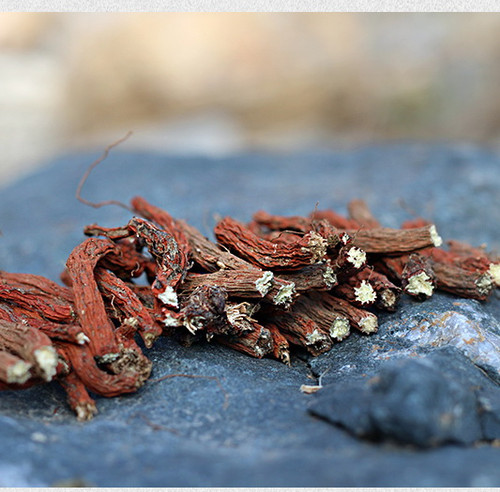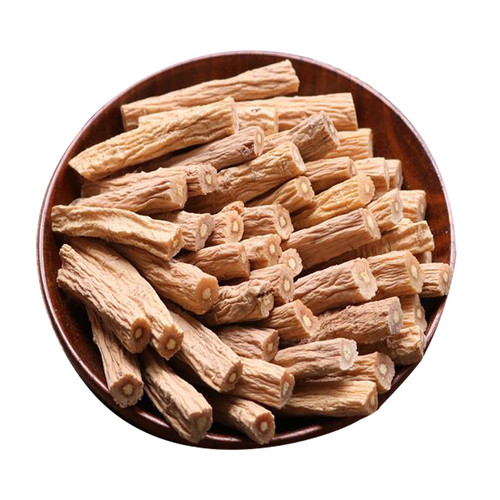Product Overview
Parts used: Dried root and rhizome
TCM category: Herbs that invigorate the Blood
TCM nature: Cool
TCM taste(s): Bitter
Meridian affinity: Heart Liver
Scientific name: Salvia miltiorrhiza
Other names: Chinese sage, Tan shen
Use of red sage roots (Dan Shen) in TCM
Please note that you should never self-prescribe TCM ingredients. A TCM ingredient is almost never eaten on its own but as part of a formula containing several ingredients that act together. Please consult a professional TCM practitionner, they will be best able to guide you.
Preparation: Remove impurities and smaller stems, wash, cut in thick slices and dry
Dosage: 3 - 12 grams
Main actions according to TCM*: Invigorates the Blood, breaks up Stasis and eases pain. Clears Heat and calms restlessness.
Primary conditions or symptoms for which red sage roots may be prescribed by TCM doctors*: Irregular menstruation Amenorrhea Dysmenorrhea Chest pain Rheumatoid arthritis Hepatosplenomegaly Angina Restlessness Insomnia
Contraindications*: Do not use if there is no Blood Stasis. It should not be used in conjunction with Radix Veratri.
Common TCM formulas in which red sage roots are used*:
For irregular menstruation with pain combine red sage roots with dong quai (Dang Gui) and motherwort herbs (Yi Mu Cao).
For joint pains caused by Blood Stagnation combine red sage roots with dong quai (Dang Gui), achyranthes roots (Niu Xi) and szechuan lovage roots (Chuan Xiong).
For flank pain or pain beneath the ribs combine red sage roots with oyster shells (Mu Li ke), red peony roots (Chi Shao) and bupleurum roots (Chai Hu).
Key TCM concepts behind red sage roots (Dan Shen)'s properties
In Traditional Chinese Medicine (TCM), red sage roots are plants that belong to the 'Herbs that invigorate the Blood' category. Like the name indicates these herbs tend to stimulate the Blood flow. In TCM they're used to help the circulation of Blood in cardiovascular conditions or menstrual irregularities as well as to treat acute pains caused by Blood Stagnation. They can also be used to treat Blood Stasis in the case of certain tumors, cysts and hardened clots.
Furthermore red sage roots are plants that are Cool in nature. This means that red sage roots tend to help people who have too much "heat" in their body, although with less effect than a plant that would be Cold in nature. Balance between Yin and Yang is a key health concept in TCM. Those who have too much heat in their body are said to either have a Yang excess (because Yang is Hot in nature) or a Yin deficiency (Yin is Cold in Nature). Depending on your condition red sage roots can help restore a harmonious balance between Yin and Yang.
Red sage roots also taste Bitter. The so-called "five elements" theory in Chinese Medicine states that the taste of TCM ingredients is a key determinant of their action in the body. Bitter ingredients like red sage roots tend to have a cleansing action on the body by clearing heat, drying dampness and promoting elimination via urination or bowel movements.
The tastes of ingredients in TCM also determine what organs and meridians they target. As such red sage roots are thought to target the Heart and the Liver. In addition to regulating blood flow, in TCM the Heart is believed to be the store of the "spirit" which basically refers to someone's vitality. The Liver on the other hand is often referred as the body's "general" because it is in charge of regulating the movements of Qi and body fluids. It also takes a leading role in balancing our emotions.










